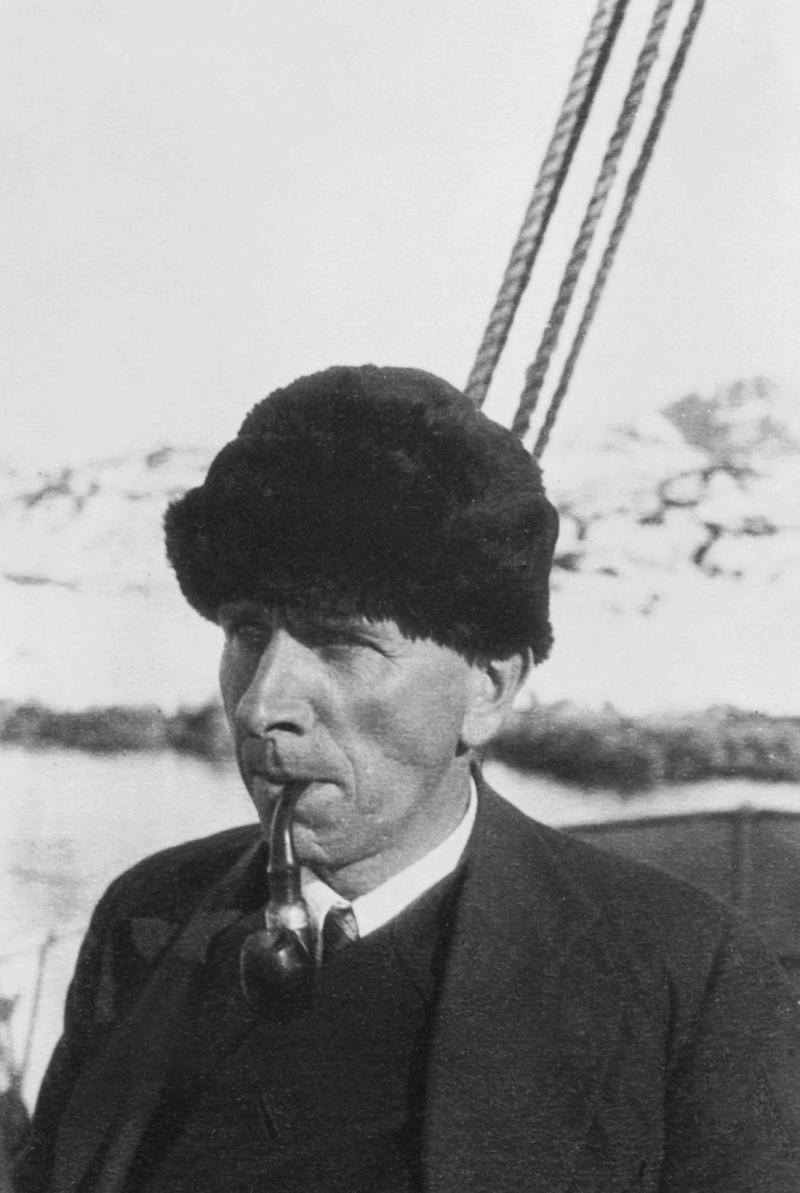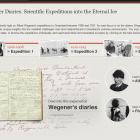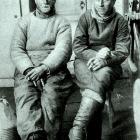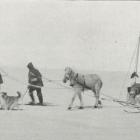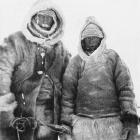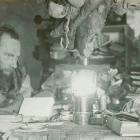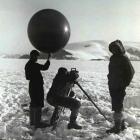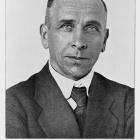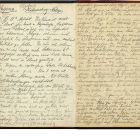Biography of Alfred Wegener
Alfred Wegener (1880–1930) became internationally known for his heavily disputed theory of continental drift, which he formulated as early as 1912. Yet his exploration of Greenland, as well as his related work in glaciology and aerology, also makes up a considerable part of his multifarious scientific career as a meteorologist and geophysicist.
Wegener lived in a period of tremendous political and scientific upheaval and transformation. Born in Berlin, he grew up in the German Empire at a time that saw the advent of new technologies such as the airship, electricity and the automobile. At that time Max Planck and Albert Einstein were calling the fundamentals of modern physics into question. In addition, geophysics, meteorology, and glaciology were changing into modern, globally oriented disciplines.
While his father was a theologian and classics teacher, Alfred and his older brother Kurt (1878–1964) were more inclined towards the natural sciences. Wegener studied mathematics and astronomy in Berlin and Heidelberg, but soon was drawn to geophysics and meteorology. Alfred, like his brother, enjoyed hiking, mountain climbing, and sailing. After the completion of his PhD in astronomy, he went together with his brother Kurt to the aeronautical observatory, the “Königlich Preußisches Aeronautische Observatorium Lindenberg” close to Berlin. Together they participated in ballooning and conducted meteorological observations in the new discipline of aerology. Together they set a world record for the longest time spent aloft in a balloon, remaining in the air for 52 hours from 5 to 7 April 1906. The experiences with kites and balloons as a meteorologist in the new field of aerology at Lindenberg gave him the unexpected opportunity to participate in the Danish Danmark Expedition to Greenland from 1906–1908.
Wegener’s publications in the field of geophysics are remarkable because they are often based on intuitive insights and careful observations and encompass very different fields—the origins of continents and oceans, paleoclimatology, aerology, meteorology and atmospheric sciences, origins of craters on the moon, aurora and wind phenomena in the polar regions, or the origins of tornados and turbulence phenomena, and similar matters.
His close relationship with the climatologist Wladimir Köppen (1846–1940), whom he met at the kite station in Hamburg Großborstel in 1906 and would become his father-in-law, was very important for his further life and career. They discussed Wegener’s ideas intensively. In 1911 Wegener formulated his ideas about the origins of oceans and continents for the first time. Also in this case it was an intuitive insight and immediate observation that made him think about the origins of continental movements. A letter from Wegener to Köppen, preserved at the Deutsches Museum, documents his ideas:
Marburg, 6 December 1911. Dear Father, I must answer your lengthy letter straightaway. I do believe that you consider my ancient continent to be far more fantastic than it really is and you do not yet see that it’s merely a matter of interpreting the observation material. Even if I only arrived at the idea due to the correspondence between the coastlines, the documentation will naturally have to be based on material from geological observation.
—Letter of Alfred Wegener to his father-in-law, Wladimir Köppen, Marburg, 6 December 1911, DMA, HS 1968-596, 17.
Marburg, 6.12.1911. Lieber Vater, auf Deinen ausführlichen Brief muß ich Dir gleich antworten. Ich glaube doch, Du hältst meinen Urkontinent für phantastischer als er ist und siehst noch nicht, daß es sich lediglich um Deutung des Beobachtungsmaterials handelt. Wenn ich auch nur durch die übereinstimmenden Küstenlinien darauf gekommen bin, so muß die Beweisführung natürlich von dem Beobachtungsmaterial der Geologie ausgehen.
—Brief von Alfred Wegener an seinen Schwiegervater Wladimir Köppen, Marburg, 06.12.1911, DMA, HS 1968-596, 17.
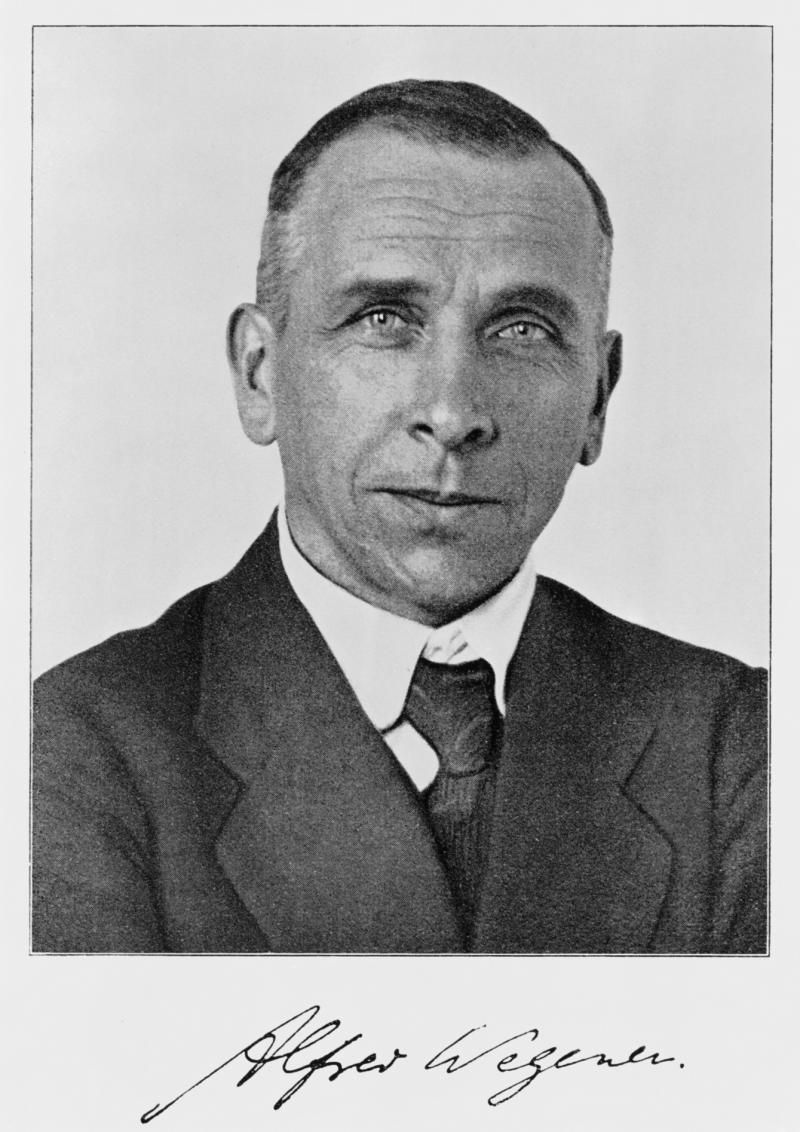
Portrait of Alfred Wegener (1880–1930). German meteorologist and important contributor to the theory of continental drift. Unknown photographer, n.d.
Portrait of Alfred Wegener (1880–1930). German meteorologist and important contributor to the theory of continental drift. Unknown photographer, n.d.
© Deutsches Museum, Archiv (BN_30985)
Used by permission.
The copyright holder reserves, or holds for their own use, all the rights provided by copyright law, such as distribution, performance, and creation of derivative works.
On 6 January 1912, Wegener gave a courageous presentation at the annual meeting of the geological society (Geologische Vereinigung) at the Senckenberg Museum in Frankfurt. This talk then was published as an article in the renowned journal Petermanns Geographische Mitteilungen [Alfred Wegener: Die Entstehung der Kontinente. In: Petermanns Mitteilungen 1912, pp. 185–95, 253–56, and 305–09]. In 1915 these ideas were then published as a book, Über den Ursprung der Kontinente und Ozeane (On the Origins of the Continents and Oceans), which was revised several times. However, during his lifetime Wegener did not receive recognition for his ideas. Only later, in the context of the systematic exploration of the seafloor in the 1950s, did observations of the phenomenon of seafloor spreading prove his insights.
In his Greenland diaries the theory of continental drift is only mentioned once in a rather ironic self-reflection about the difficult circumstances of polar exploration:
We certainly won’t make it out of here today. And who knows how things will turn out tomorrow. One would think that this forced rest would encourage my mind to ponder, solve scientific questions, and to concentrate on things that I know I think about constantly when I am back home. But only once in a while do I find myself coming up with some unimpressive beginnings of ideas. All these problems, that of the volcanos, the cyclones, the blue strips in the ice, the daily fluctuation of the barometer, the rotation in the solar system, etc. are always with me; they are always sitting, so to speak, right in front of me, yet my imagination does not make it through, and instead chooses other paths. It persistently returns to two things, back and forth, and both are of a shamefully material nature: How will Else and I arrange things, and what kind of food will we cook? Note that the first question comes up primarily after our meals, the second before. I lack sufficient courage, otherwise I could write 2 disquisitions on these topics, in comparison with which the “Origin of Continents and Oceans” would look like an essay by a sixth-grader.
—Danish North Greenland Expedition, 19 May 1913, DMA NL 001/010, 55–57.
In 1913 he married Else Köppen (the daughter of his mentor Wladimir Köppen), with whom he had three children. During World War I Wegener worked as a meteorologist. In addition to these duties, he found time to write his famous book on continental drift. After World War I the ambitious and by then well-known Wegener was still having trouble finding a professorship. At that time he held a position at the Hamburger Seewarte observatory, succeeding his father-in-law Wladimir Köppen as leader of the meteorological branch. In 1924 he accepted an offer from the University of Graz (Austria), where he spent fruitful years as an academic teacher and researcher. In the early 1920s, academic life was still disrupted by the consequences of World War I. It took several years until the newly founded Notgemeinschaft der Deutschen Wissenschaft could support prestigious expeditions in remote areas to explore the oceans (Meteorexpedition 1925–1927), the Pamir mountains expedition (1928), or Wegener’s Greenland expeditions in 1929 and 1930–1931, which ended with the tragic death of Wegener and his companion, the Greenlander Rasmus Villumsen (1910–1930).
All in all, Wegener participated in four polar expeditions: the Danmark Expedition (1906–1908), the glaciological Danish North Greenland Expedition with Johann Peter Koch (1912), the pre-expedition (1929), documented neither in the Deutsches Museum archives nor in this virtual exhibition, and the German Greenland Expedition (1930–1931). He is well known as an expert on Greenland and for his close relations with the Inuit populations of Denmark and Greenland. Wegener was an experienced polar explorer and many of his scientific goals can be traced to the early expeditions where he was already starting to pursue glaciological and meteorological questions. Although his final expedition faced many difficulties and ended with his tragic death, it pursued an ambitious scientific program that served as a reference for subsequent international expeditions.
Today the German research institute for polar science and marine science is named the Alfred-Wegener-Institut für Polar- und Meeresforschung.


